Abstract
The prevalence of byssinosis and chronic respiratory symptoms was studied in 117 workers in four Swedish cotton mills. Changes of forced expiratory volume in 0·75 sec. (F.E.V.0·75) during a Monday and a Wednesday were assessed in 64 male workers in four cardrooms in these mills. Dust sampling was performed with weighed millipore filters.
Prevalences of byssinosis as judged from the workers' histories were 68%, 55%, 44%, and 25% in the four mills; the lowest prevalence of 25% was found in a mill spinning both high grade cotton yarn and rayon. Among 67 workers in the mills having a byssinosis prevalence of 68% and 55%, 60% were non-smokers, 70% had chronic cough, and 27% had chronic dyspnoea. The F.E.V.0·75 decreased on Monday in workers who gave a history of Monday dyspnoea, and to a lesser degree, but still significantly, in those who did not.
In spite of marked differences in fine dust (i.e., dust smaller than 2 mm. diameter) concentrations in the four cardrooms, no significant relations between dust content, byssinosis prevalence, and F.E.V.0·75 changes on Monday could be demonstrated.
The prevention and treatment of byssinosis is discussed. Workers at risk should receive a periodical medical examination including at least a spirographical pulmonary function test at intervals of one year or less.
Full text
PDF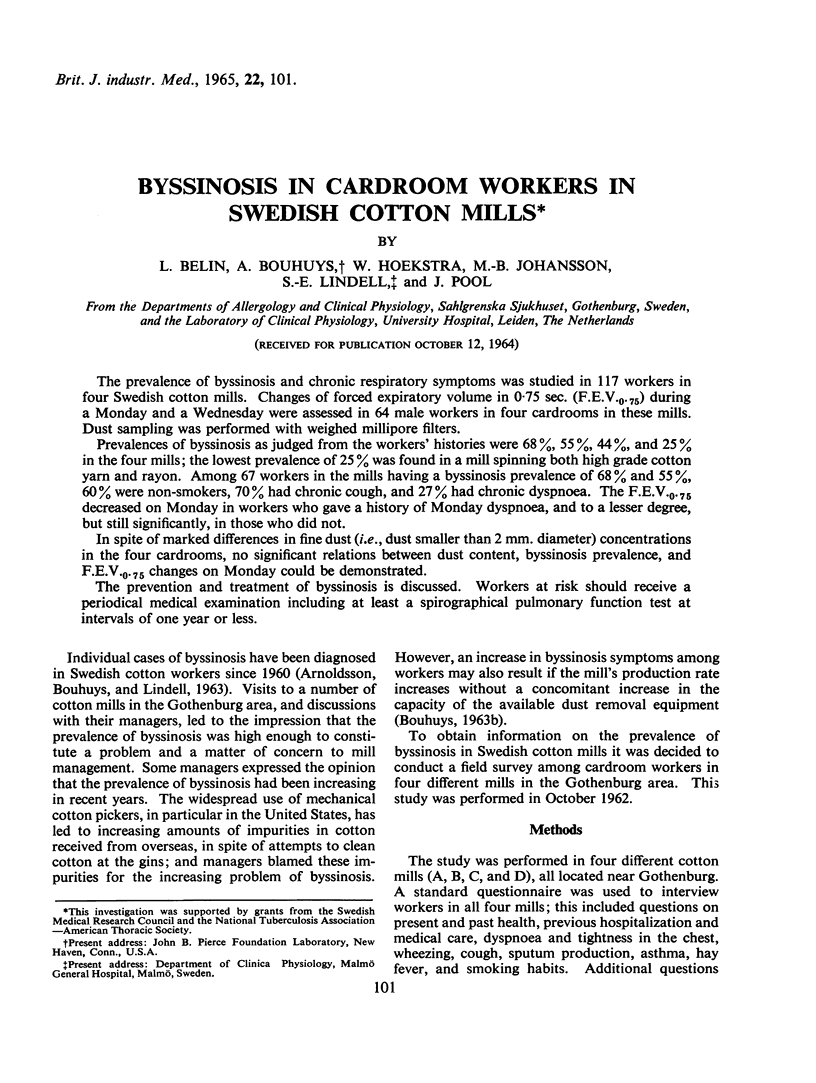
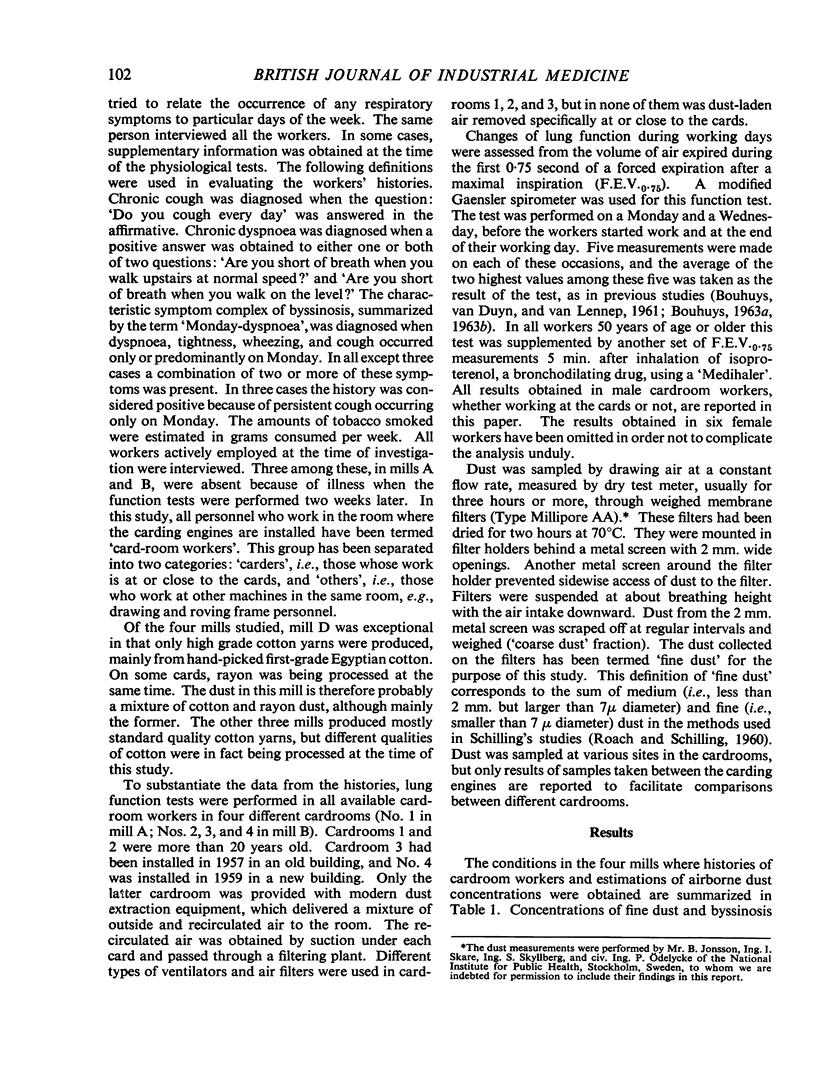
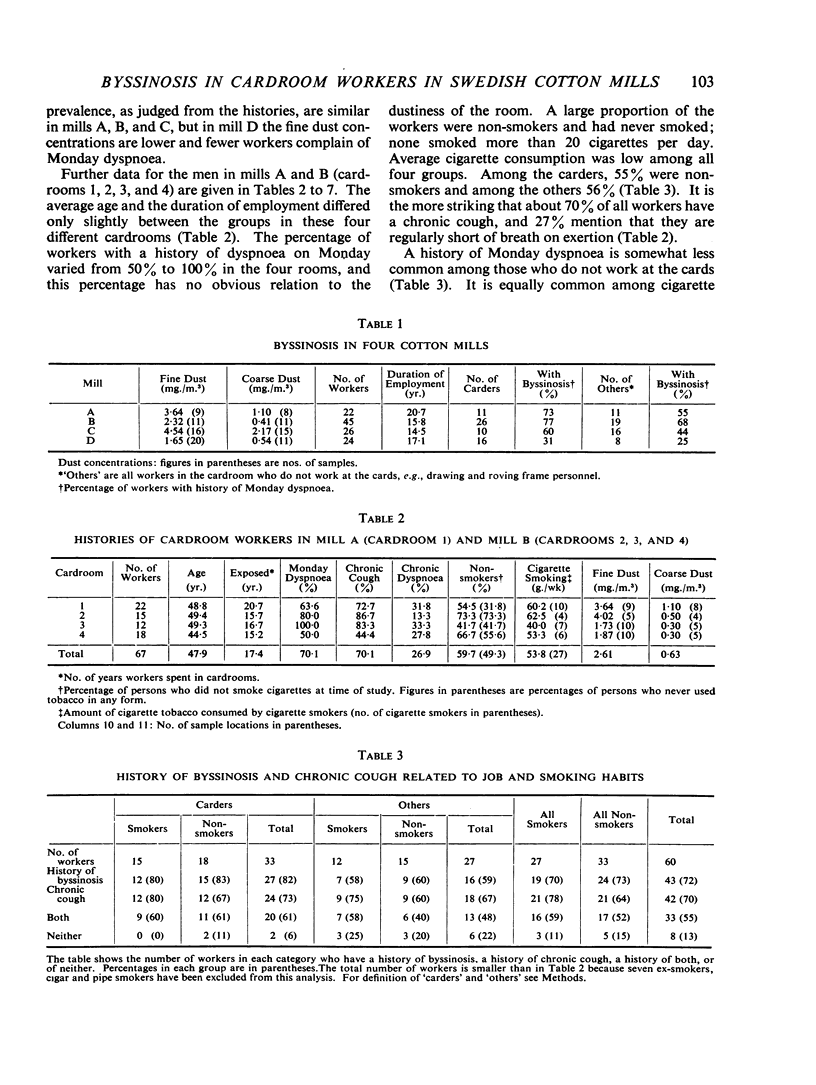
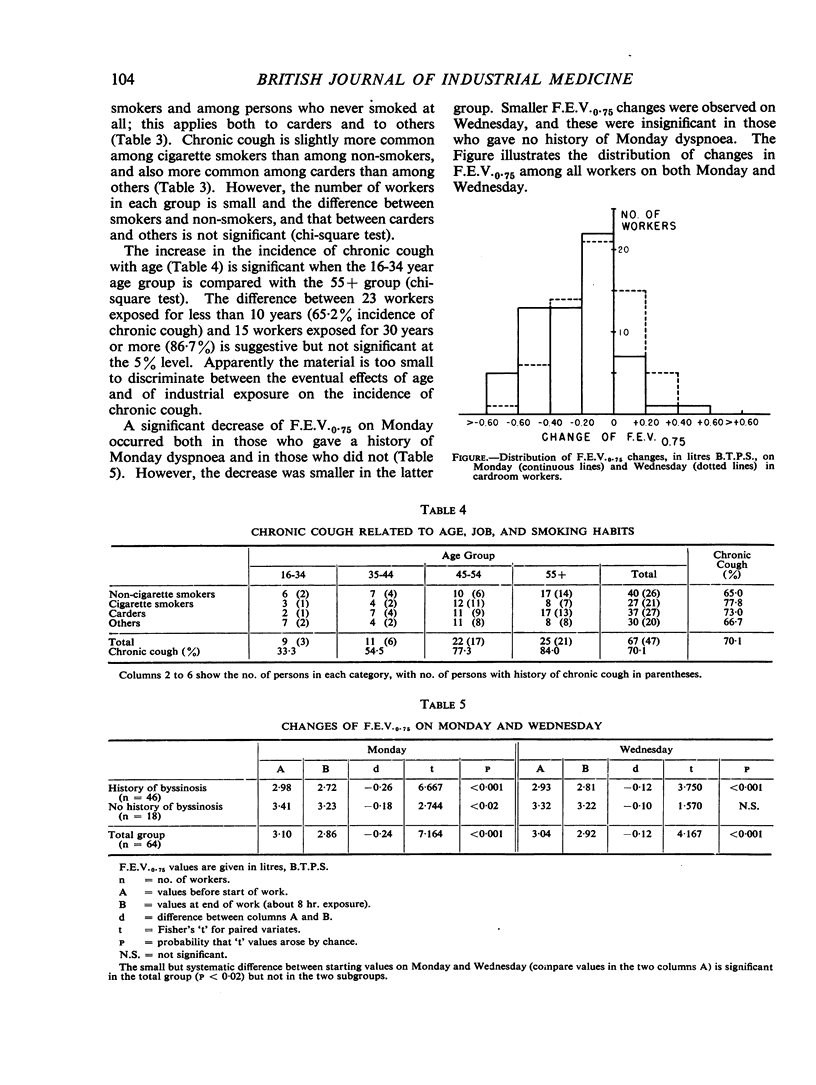
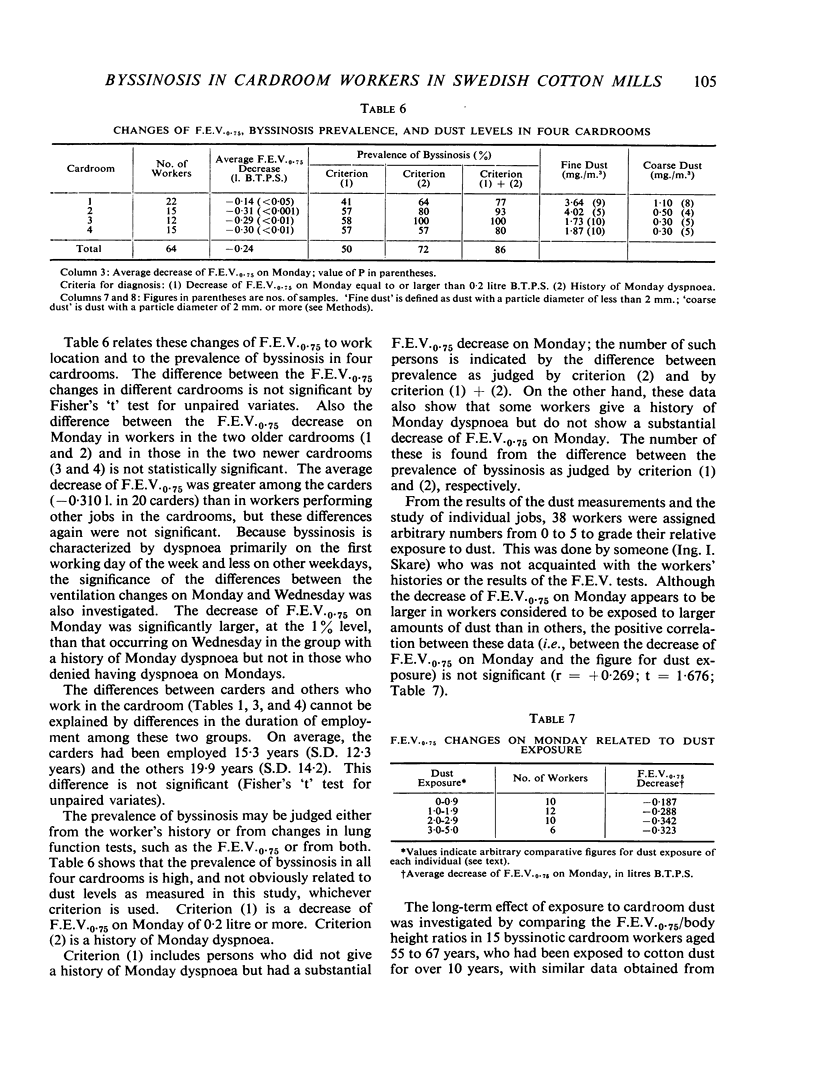
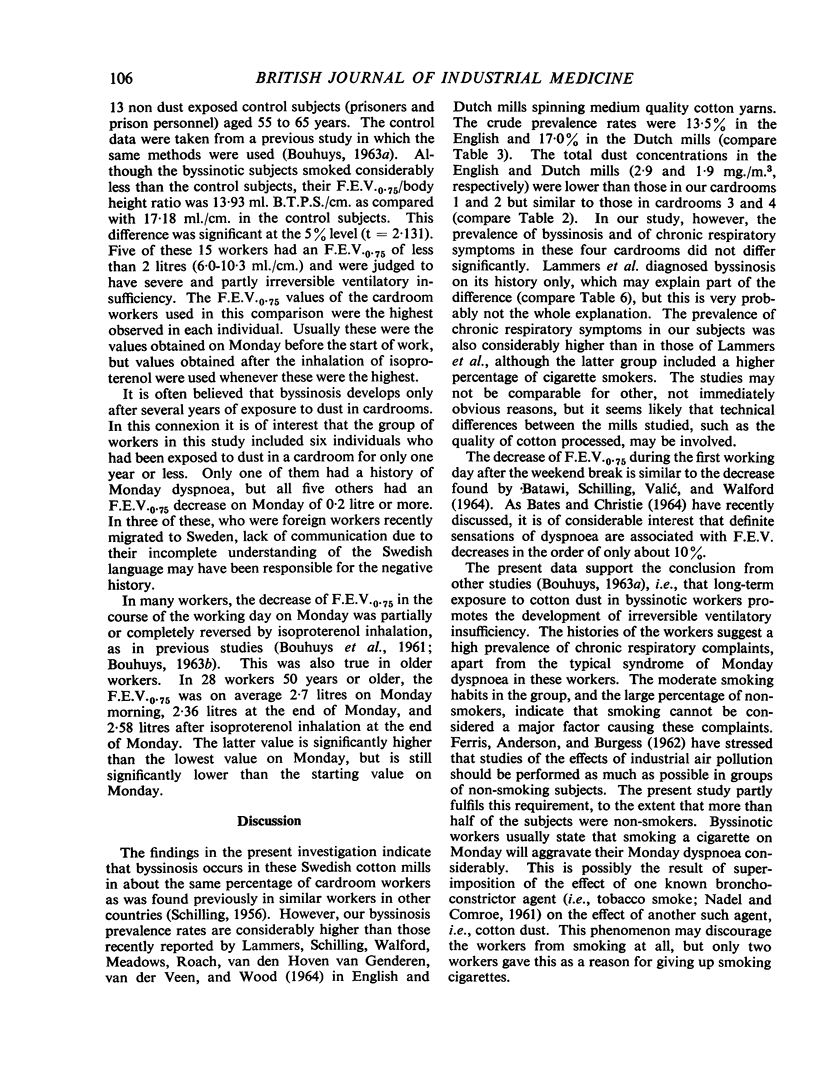
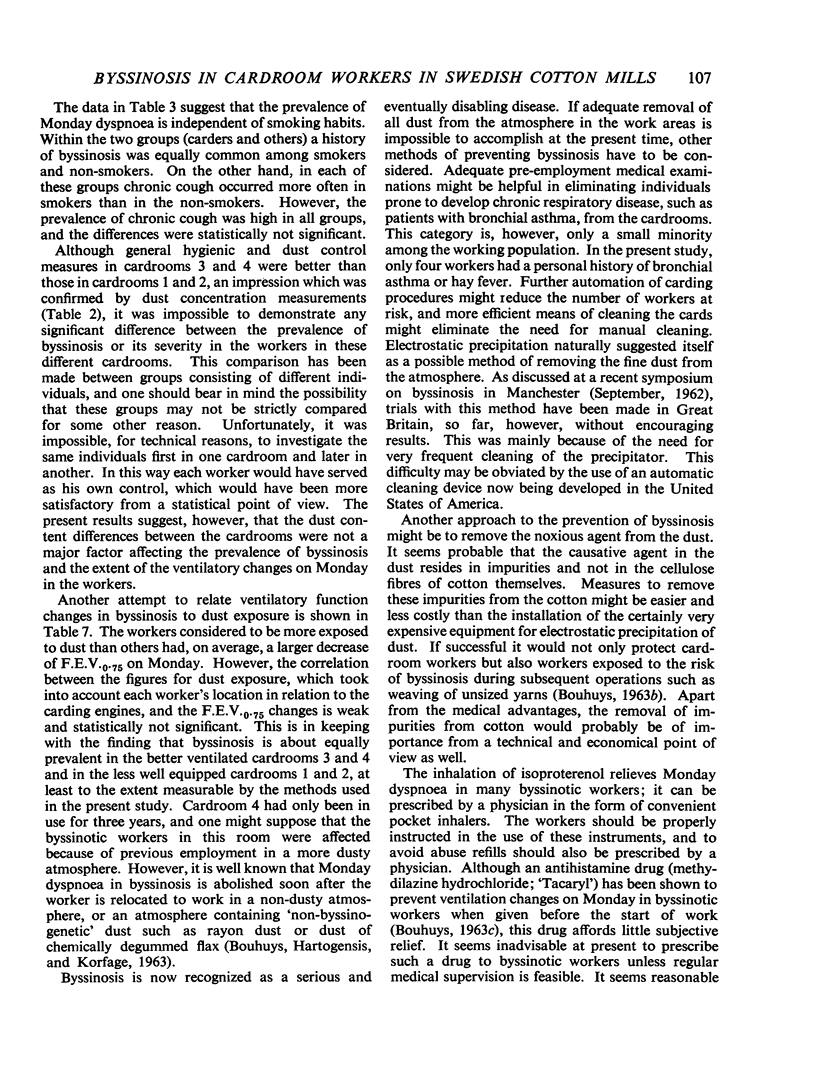

Selected References
These references are in PubMed. This may not be the complete list of references from this article.
- BOUHUYS A., HARTOGENSIS F., KORFAGE H. J. BYSSINOSIS PREVALENCE AND FLAX PROCESSING. Br J Ind Med. 1963 Oct;20:320–323. doi: 10.1136/oem.20.4.320. [DOI] [PMC free article] [PubMed] [Google Scholar]
- BOUHUYS A. The forced expiratory volume (FEV-0.75) in healthy males and in textile workers. Am Rev Respir Dis. 1963 Jan;87:63–68. doi: 10.1164/arrd.1963.87.1.63. [DOI] [PubMed] [Google Scholar]
- BOUHUYS A., van DUYN, van LENNEP H. Byssinosis in flax workers. Arch Environ Health. 1961 Nov;3:499–509. doi: 10.1080/00039896.1961.10663061. [DOI] [PubMed] [Google Scholar]
- FERRIS B. G., Jr, ANDERSON D. O., BURGESS W. A. Prevalence of respiratory disease in a flax mill in the United States. Br J Ind Med. 1962 Jul;19:180–185. doi: 10.1136/oem.19.3.180. [DOI] [PMC free article] [PubMed] [Google Scholar]
- LAMMERS B., SCHILLING R. S., WALFORD J., MEADOWS S., ROACH S. A., VAN DEN HOVEN D., VAN DEN VEEN Y. G., WOOD C. H. A STUDY OF BYSSINOSIS, CHRONIC RESPIRATORY SYMPTOMS, AND VENTILATORY CAPACITY IN ENGLISH AND DUTCH COTTON WORKERS, WITH SPECIAL REFERENCE TO ATMOSPHERIC POLLUTION. Br J Ind Med. 1964 Apr;21:124–134. doi: 10.1136/oem.21.2.124. [DOI] [PMC free article] [PubMed] [Google Scholar]
- NADEL J. A., COMROE J. H., Jr Acute effects of inhalation of cigarette smoke on airway conductance. J Appl Physiol. 1961 Jul;16:713–716. doi: 10.1152/jappl.1961.16.4.713. [DOI] [PubMed] [Google Scholar]


